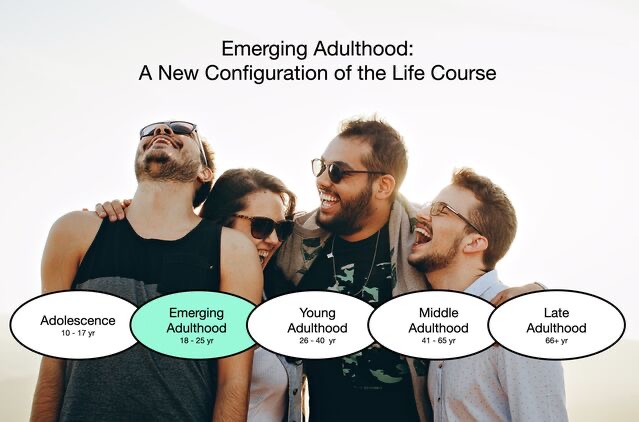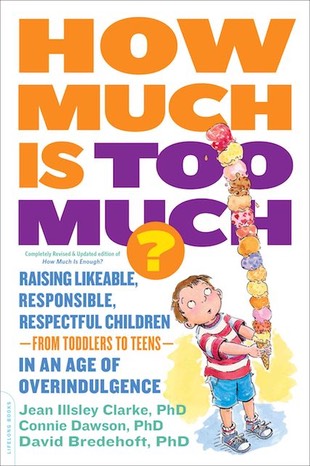KEY POINTS
- Emerging adulthood is a period of development between the ages of 18 to 25 years which is distinct from adolescence and later stages of adulthood.
- Five major struggles occur during emerging adulthood: identity, instability, being self-focused, feeling in-between, and new possibilities.
- Brain science provides scientific support for this new stage of adulthood.
The division of life into a series of ages or stages can be found in philosophy as far back as Aristotle and in the arts dating to Shakespeare's As You Like It. In the monologue known as "All the world's a stage," Shakespeare identifies what he calls "seven ages of man”:
And all the men and women merely players;
They have their exits and their entrances,
And one man in his time plays many parts,
His acts being seven ages.
Psychologists now universally recognize that humans go through normal stages of development from conception to old age. Erik Erickson's eight stages of psychosocial development is one of the earliest theories of lifespan development. Building on his mentor Sigmund Freud's theory of psychosexual development, Erickson focused on social influences rather than sexual ones. Further, Erikson expanded Freud's theory beyond adolescence to include three distinct stages of adulthood.
Source: Source: Bredehoft
In the past, the demarcation between adolescence and adulthood was very distinct, marked by rituals or societal customs known as rites of passage. However, in twenty-first-century America, many of these rites of passage no longer exist or do not carry the significance that they once did. And before adolescents become young adults they need to negotiate what psychologist Jeffrey Arnett calls emerging adulthood.

Source: Photo Helena Lopes/Pexels; Graphic/Bredehoft
Who Are Emerging Adults?
It has been 20 years since a new stage of development called emerging adulthood was proposed by Arnett. Emerging adulthood is a period of development between the ages of 18 and 25 which is distinct from adolescence and other stages of adulthood. Arnett theorized that "...emerging adulthood, is neither adolescence nor young adulthood but is theoretically and empirically distinct from them both. Emerging adulthood is distinguished by relative independence from social roles and from normative expectations.”
The 5 Features That Make Emerging Adulthood a Distinct Developmental Period
Arnett proposed that emerging adulthood is defined by five main features, some of which are found in other life stages, but which are most prominent during the emerging adult years. These main features make emerging adulthood a distinct developmental period.
1. Identity Exploration. Emerging adulthood is a time for individuals to explore who they are in the context of love, work, beliefs, and values. Emerging adults are faced with a myriad of possibilities and life choices, part of the exploration and struggle of one's identity: Who am I? Who are all of these people out there?And, how do I fit in?
2. Instability. Emerging adulthood is a time of instability. It's common for emerging adults to change jobs numerous times. (The average American holds eight different jobs from ages 18 to 29.) Seventy percent of emerging adults report that they have not made as much progress in the careers as they had hoped. The U.S. Census Bureau reports that young adults age 18-24 also have the highest migration rate in the U.S. During this time emerging adults test out relationships with numerous partners. Their lives are often in flux as they explore life and love while trying to find meaningful work and a sense of purpose.
3. Self-focused. Emerging adulthood is perhaps the first time when individuals can basically do what they want and not answer to anyone before they engage in the enduring obligations of adult life. Emerging adults are free from most social obligations and expectations. Being self-focused has a serious purpose: self-sufficiency. Self-sufficiency is the main goal of being self-focused. Once emerging adults become self-sufficient adults they are primed to become "other-focused" which is required by the roles of marriage and parenthood.
4. Feeling In-between. Arnett writes, “In response to the question about whether they feel they have reached adulthood, most 18- to 25-year-olds respond along the lines of 'in some ways yes, in some ways no.'" Most emerging adults do not see themselves solely as an adolescent or an adult: They feel in-between. “Thus for most people, the feeling of being fully adult takes a long time to attain, and for a substantial period they feel in-between, as if they are emerging into adulthood but not there yet.”
5. The Age of Possibilities. Emerging adulthood is the age of possibilities. It is an opportunity for young people to transform their lives. There is an opportunity for them to break away from unhealthy family dynamics and chart a better life course. the good news is that the majority of emerging adults are optimisticabout their future work and personal relationships.
How Many Emerging Adults Are in the U.S.? Who Do They Live With?
According to the U.S. Census Bureau, there were 27.1 million emerging adults in 2010—9.6% of the population. By 2020, that number had climbed to 30.2 million, representing 9.2% of the population. The Census Bureau estimates that a higher percentage of emerging adults age 18-24 live with an unmarried partner (9.4%) than with a spouse (7.3%). (Fifty years ago, only 0.1 percent of 18- to 24-year-olds cohabitated.)
Evidence for the Stage of Emerging Adulthood
Some of the most convincing evidence supporting the new stage of emerging adulthood comes from brain science. A few supporting studies:
- Using MRI scans Bennett and Baird (2006) found significant age‐related changes in brain structure which continued after the age of 18 and represent changes related to new environmental challenges.
- Dennis et al. (2013) tracked changes in brain structural connectivity and network efficiency in a study of 439 participants ages 12 to 30. Whole-brain high angular resolution diffusion images (HARDI) were collected and analyzed. They found the brain in healthy individuals continues to change both in structure and function into the late 20s, and is different from that of teenage brain structure.
- Taber-Thomas and Perez-Edgar write: "The existing evidence shows that neurodevelopment continues throughout EA in support of emerging adult roles. The data suggest a frontolimbic fine-tuning model of brain development in EA that holds that adult functions are promoted through the strengthening of prefrontal regulation of limbic function and a newly emerging balance between prefrontal subregions involved in modulating approach and avoidance."
- Based on brain science, Caulum (2007) makes a compelling argument in the Wisconsin Law Review that emerging-adult offenders should not be treated as fully culpable adults.
Becoming a "full-fledged young adult" takes much longer today in industrialized countries than it did 50 years ago. Adolescents must successfully navigate emerging adulthood before they enter the stage of young adulthood. Upcoming posts will explore depression, anxiety, and the effects of childhood overindulgence in emerging adults.
Practice Aloha. Do all things with Love, Grace, and Gratitude
© 2021 David J. Bredehoft
References
Arnett, J. J. (2000). Emerging adulthood: A theory of development from the late teens through the twenties. American Psychologist. 55(5), 469-480. DOI: 10.1037//0003-066X.55.5.469
Arnett, J. J., & Mitra, D. (2018). Are the features of emerging adulthood developmentally distinctive? A comparison of ages 18-60 in the United States. Emerging Adulthood, 1, 1-8. doi:10.1177/2167696818810073
Arnett, J. J. (2007). Emerging adulthood: What is it, and what is it good for? Society for Research in Child Development. 1(2), 68-73. Retrieved from http://citeseerx.ist.psu.edu/viewdoc/download?doi=10.1.1.837.1601&rep=rep1&type=pdf
Arnett, J. J. (2006). Emerging adulthood: Understanding the new way of coming of age. In J. J. Arnett & J. L. Tanner (Eds.), Emerging adults in America: Coming of age in the 21st century (p. 3–19). American Psychological Association. https://doi.org/10.1037/11381-001
Dennis, E. L., et al., (2013). Development of brain structural connectivity between Ages 12 and 30: A 4-Tesla diffusion imaging study in 439 adolescents and adults. Neuroimage. 64, 671-684. doi: 10.1016/j.neuroimage.2012.09.004
Bennett, C. M., & Baird, A. A. (2006). Anatomical changes in the emerging adult brain: A voxel‐based morphometry study. Hum Brain Mapp. 27(9): 766–777. doi: 10.1002/hbm.20218
Caulum, M. S. (2007). Postadolescent brain development: A disconnect between neuroscience, emerging adults, and the corrections system. Wisconsin Law Review. 729-758.
Taber-Thomas, B., & Perez-Edgar, K. (2014). Emerging adulthood brain development. In Arnett, J. J. (Ed.), The Oxford handbook of emerging adulthood (pp. 1-19). DOI: 10.1093/oxfordhb/9780199795574.013.15


